Staten Island — and it’s [stætn], not [steiten] so you know — is the most overlooked city borough on our list. The Forgotten one is hidden by the glitz and skyscrapers of Manhattan, melting-pot-like diversity of Queens and the Bronx, and hip vibes of Brooklyn. We’re catching up.
As if by request, by the weekend, the weather dropped its humidity and lowered the temperatures down to comfortable 70s.
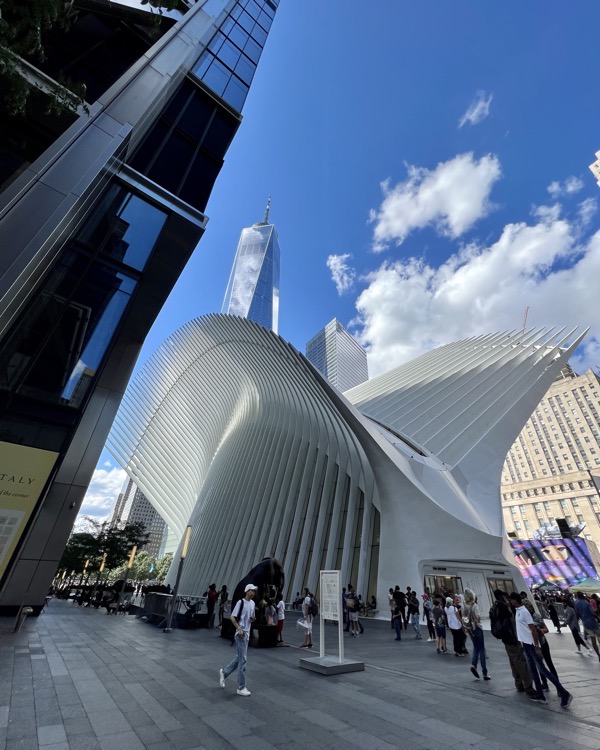
Oculus seemed like a good place to meet before heading to the Whitehall Ferry Terminal at the southern tip of Manhattan.
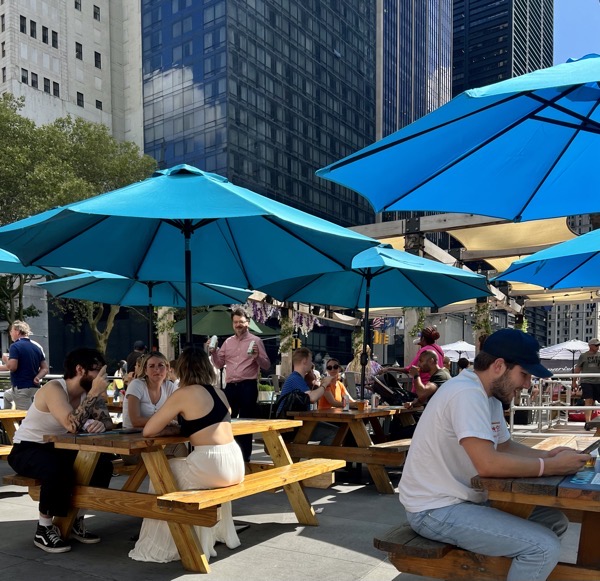
A few weeks ago, we were here running from a WFMU New York Harbor boat festivities to a 60th jubilee in New Jersey — party people that we are — and saw this outdoor beer garden.
Today, it looked like a perfect place to slow down before the upcoming weekend.
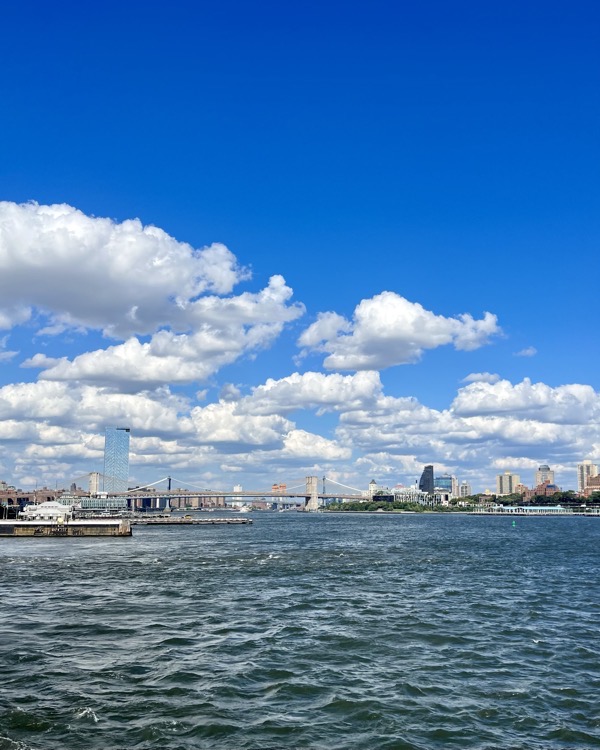
On the ferry to Staten Island, as generous locals, we took the side opposite the one that faces the Statue of Liberty.
Honestly, we wanted to avoid the stampede and have a quiet water-contemplating moment.
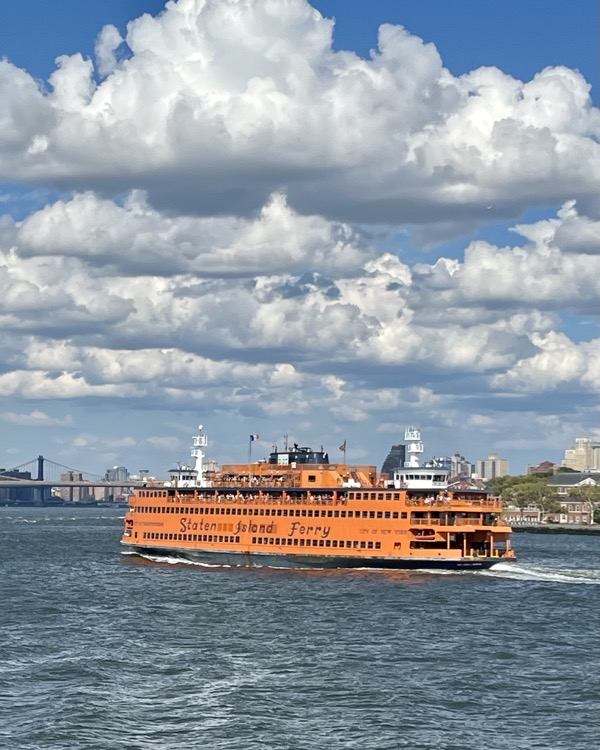
No matter how many times on this ferry, I cannot resist taking pictures. It is always exciting and always different.
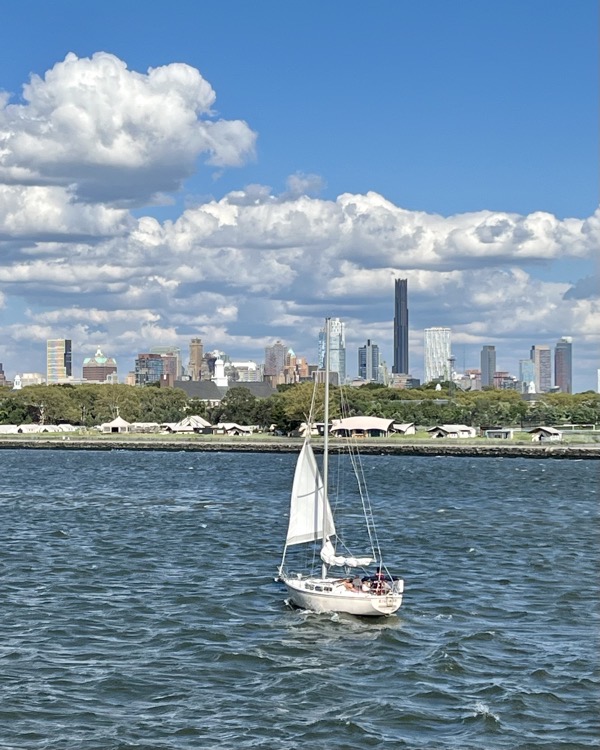
Here we are, passing by Governor’s Island with Brooklyn showing in the background.
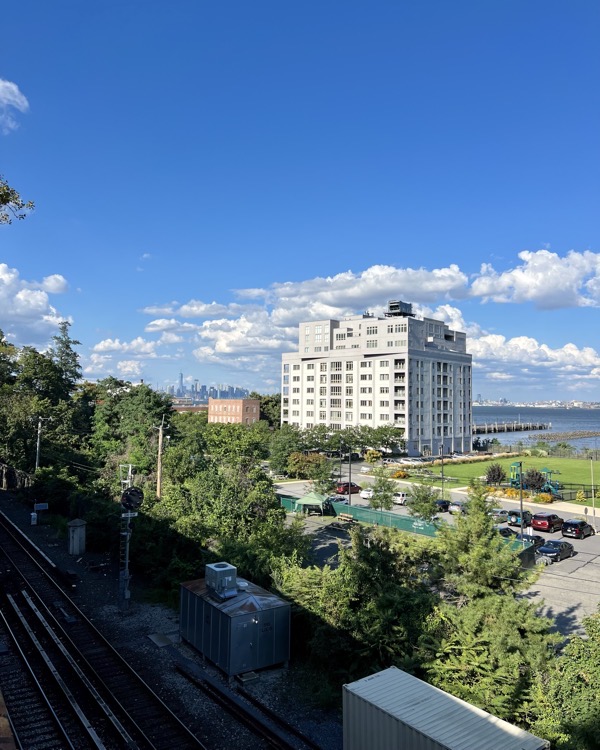
This is my first ever view of Manhattan from the shores of Staten Island.
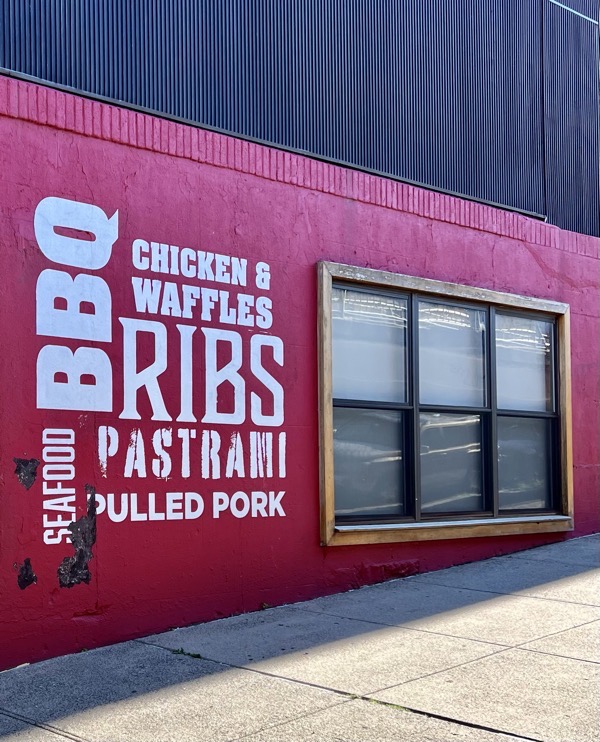
We had definite food plans and could not be tempted by any murals on the walls — no matter how attractive.
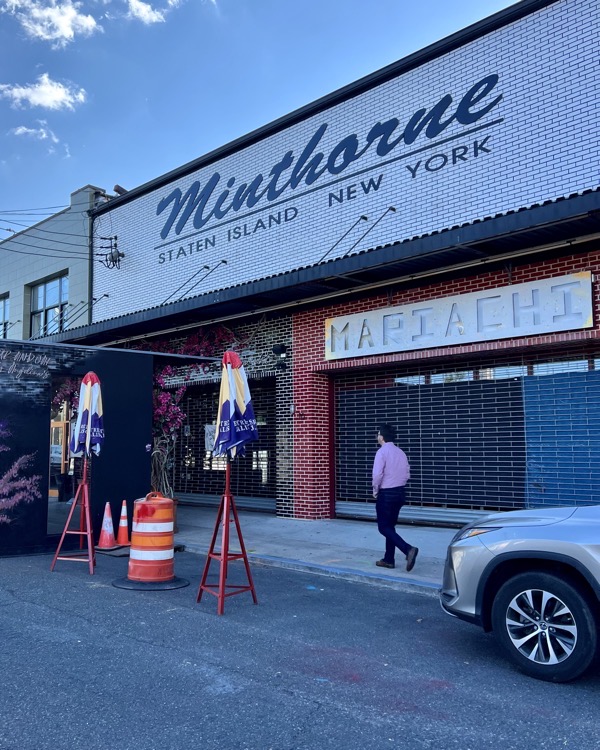
There was a 45-minute walk ahead to our destination so we broke our journey halfway through at The Flagship Brewery on Minthorne Street.
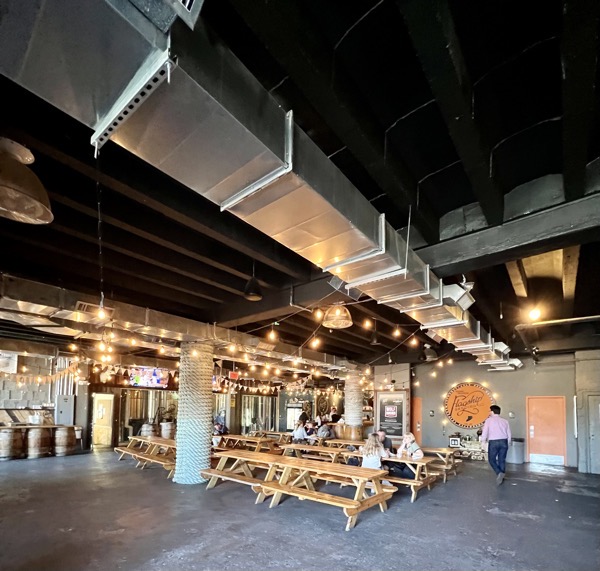
The large communal sitting area of the brewery did not look like a usual beer cave but was well lit through giant glass windows.
There were also a few spots at the bar, and a nice outdoor space with couches, tables and lights all the way around.
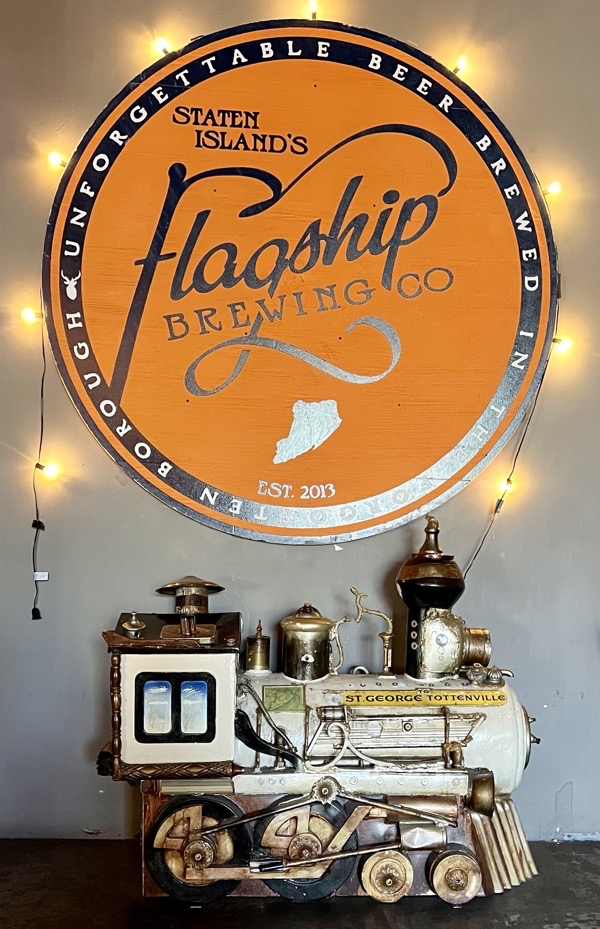
The brewery seemed to have a nice selection of IPAs, lagers, stouts, seasonal, some specialty beer. Compared to Manhattan and Brooklyn, the prices were very reasonable.
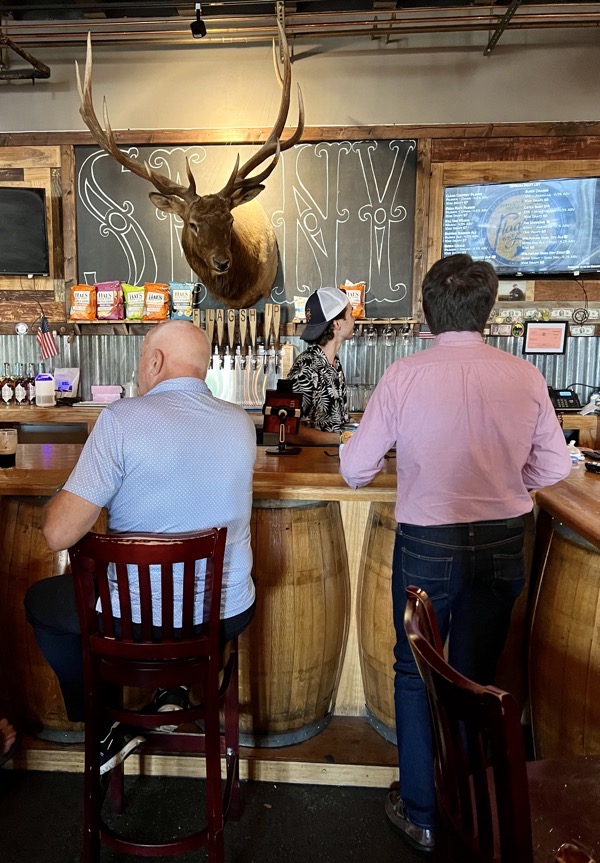
That buck head on the wall looked a bit wild. Maine? Texas? Colorado? But the people on the other side of the counter were kind and friendly.
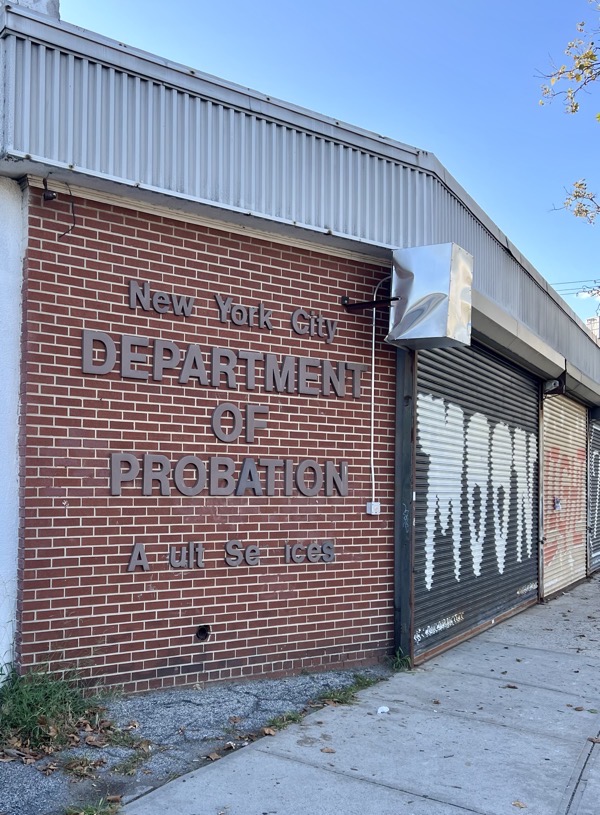
Continuing along to our destination, we did feel the area might not have been completely friendly come the dark and were planning alternative bus rides.
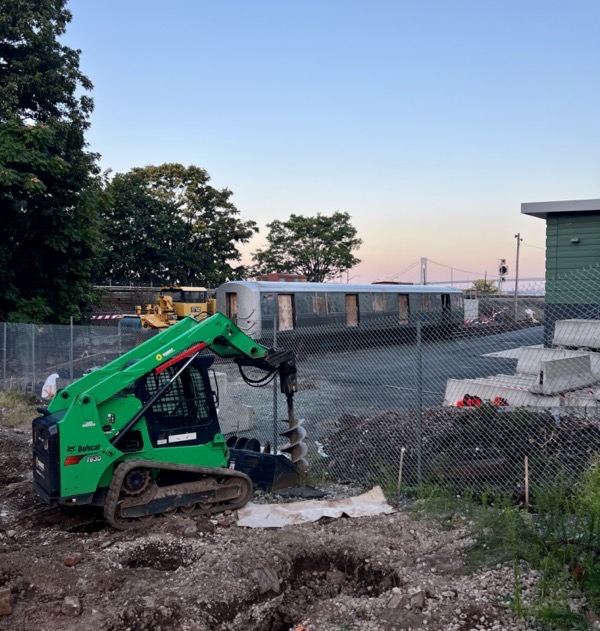
Some places we walked by were crying for TLC. Like this subway car with wood boarded doors that is blocking the view of the grand Verrazzano-Narrows Bridge. Somebody’s shelter?
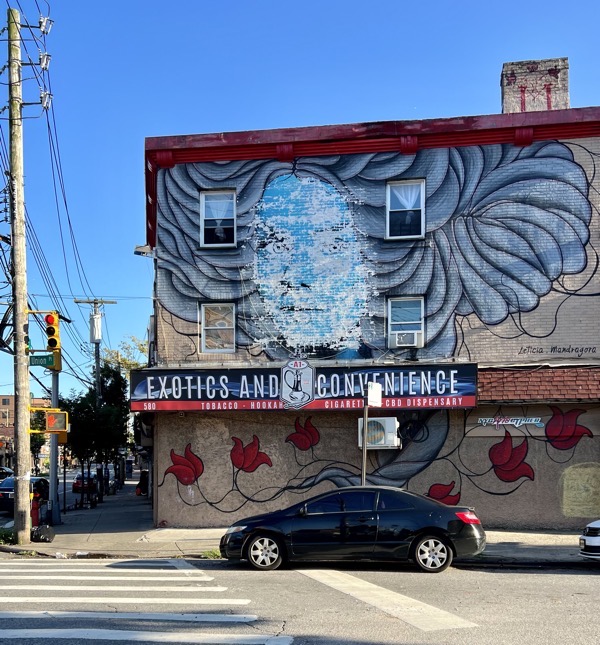
Beautiful murals over the store offering “exotic and convenient.”
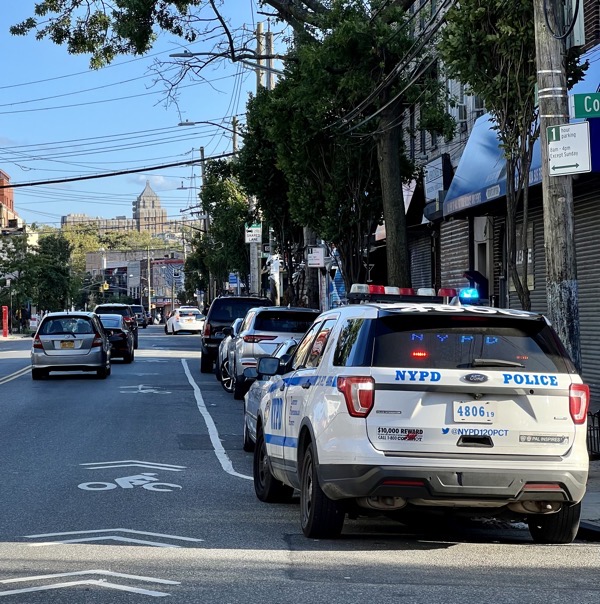
Overall, we felt safe. Paraphrasing a famous Russian saying: My police takes care of me.
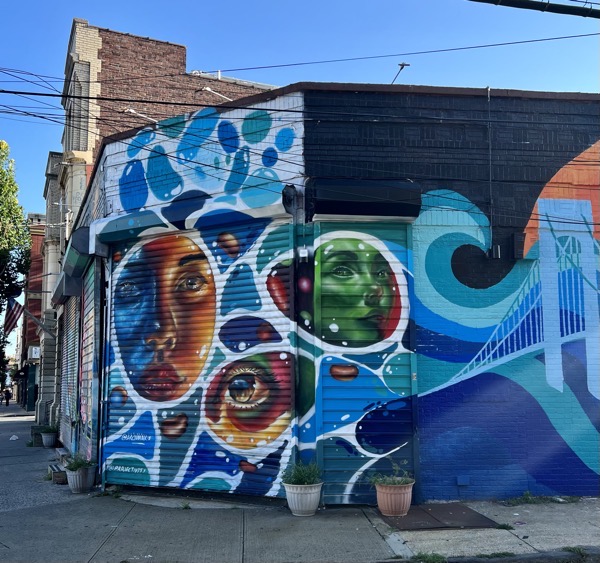
It truly was a land of murals by the way.

These doors unmistakably indicated we reached our destination, the Sri Lankan restaurant Lakruwana.
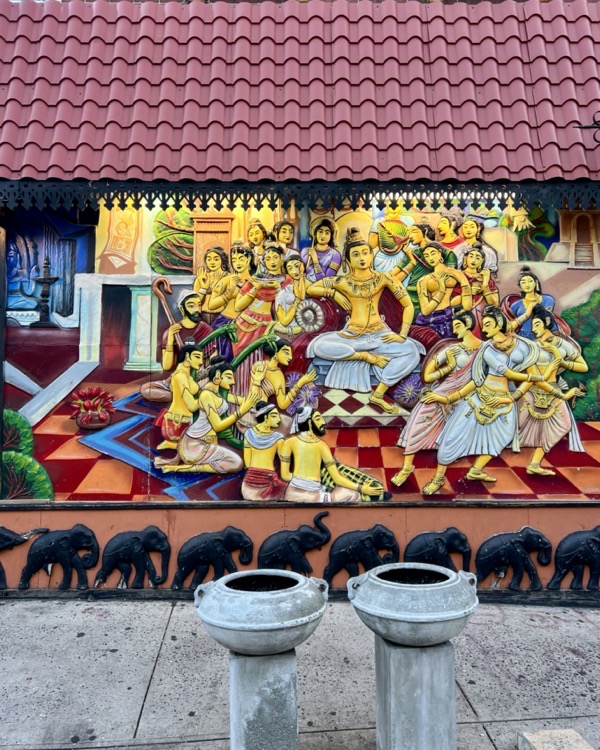
And the outdoor details gave an immediate vibe of what kind of attention and effort to expect from what’s inside.

This is what you see once you come in. The incredible decor proves my point that once you live in New York, you can travel anywhere in the world on a daily basis.
Here, you feel instantly transported into a different world. And it is not the visuals alone set you up. The smell of spices and incense, softened sounds of traditional music, unrushed ways people moved. As if you walked in through the looking glass.
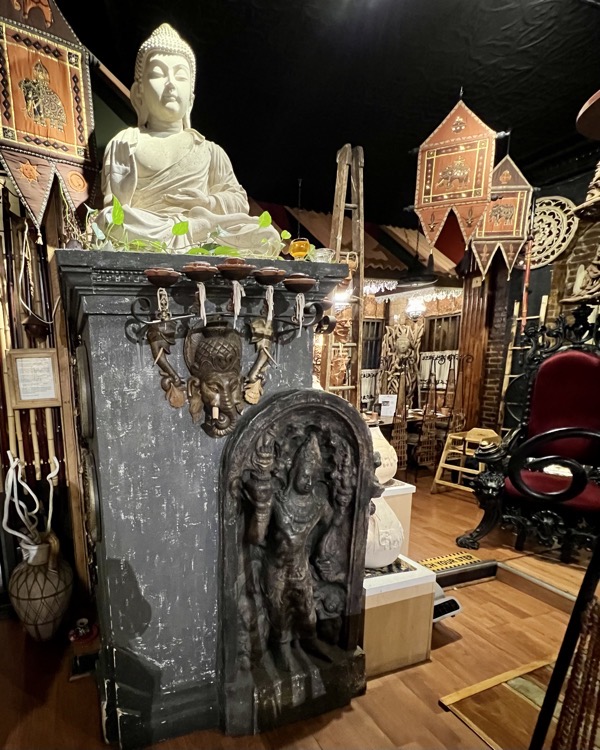
Sri Lankans observe three religions — Buddhism, Hinduism, and Islam. No mistaking that Lakruwana leans Buddhist.

The food is any restaurant’s major attraction. At Lakruwana, food and ambiance rival each other.
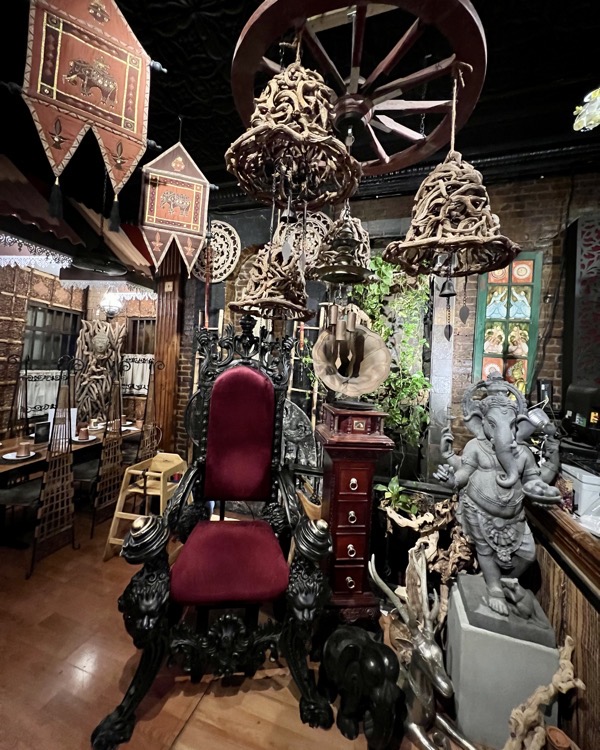
A mishmash of chairs from different cultures…
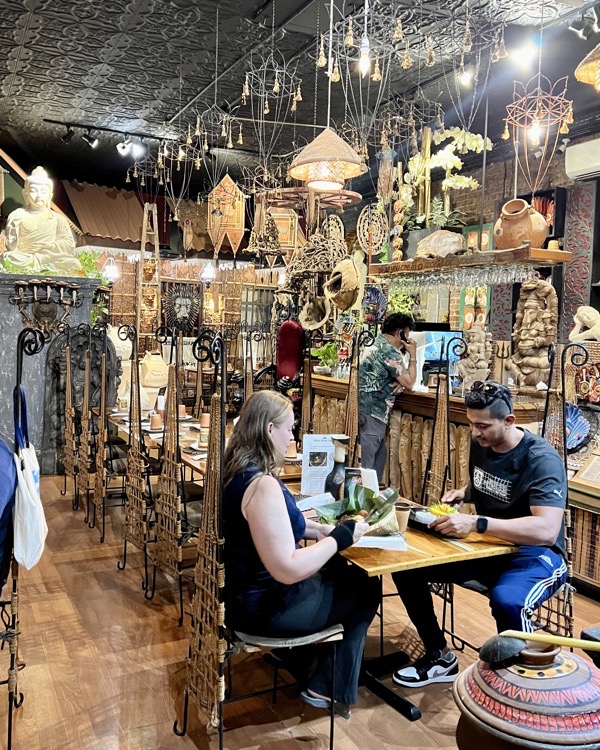
We hit, as we always do, that odd time when it is too late for lunch and too early for dinner and the place was not busy. The diners were obvious locals. Seeing me snapping pictures, they inquired if it was our first time. In unison, they all brought up the restaurant’s weekend buffets.

During the weekends, the restaurant serves food buffet style and this is the area where it happens — cauldrons, labels, and all.
The stereotype is that a buffet is a step down from the usual service and selection. Judging by the labels and signs, at Lakruwana, it’s a different story: the weekday menu is not that extensive while the buffet line up seems endless.
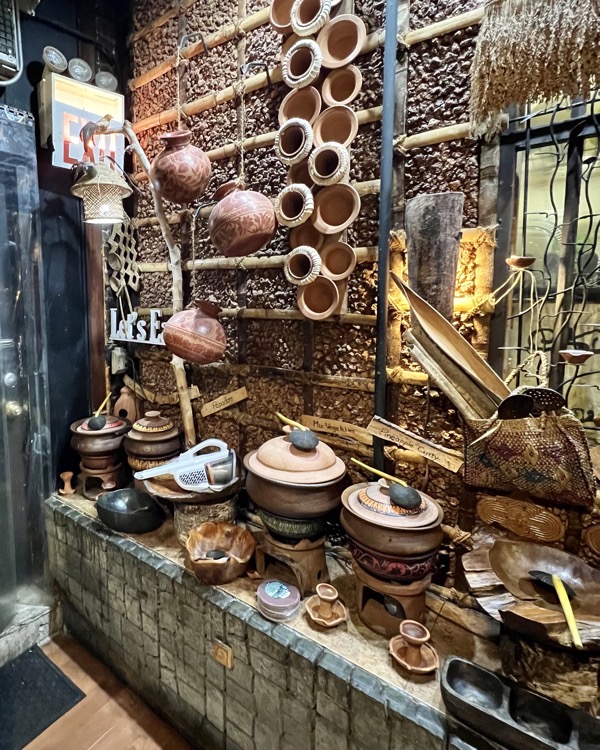
These are some more of the weekend buffet setup that is definitely making me think about another trip here to experience this.
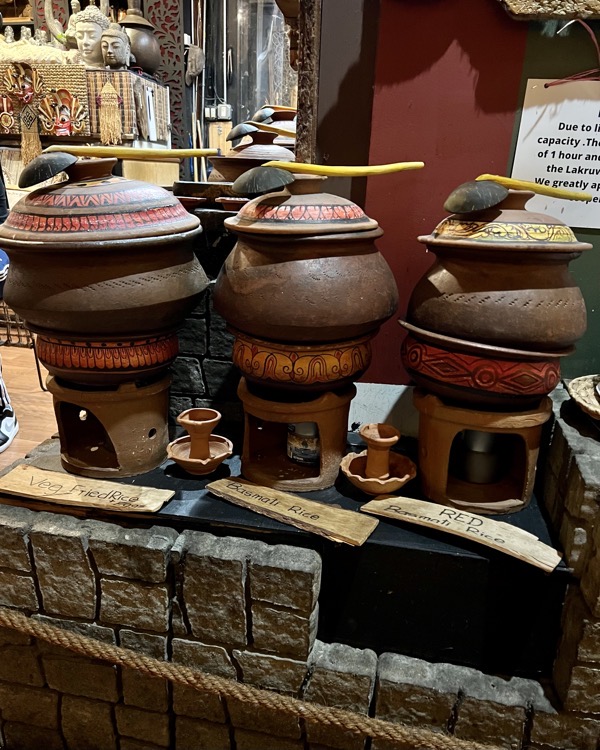
It really was hard not to take a picture of every square inch of this place. So much thought, so much work, so much pride in every detail.
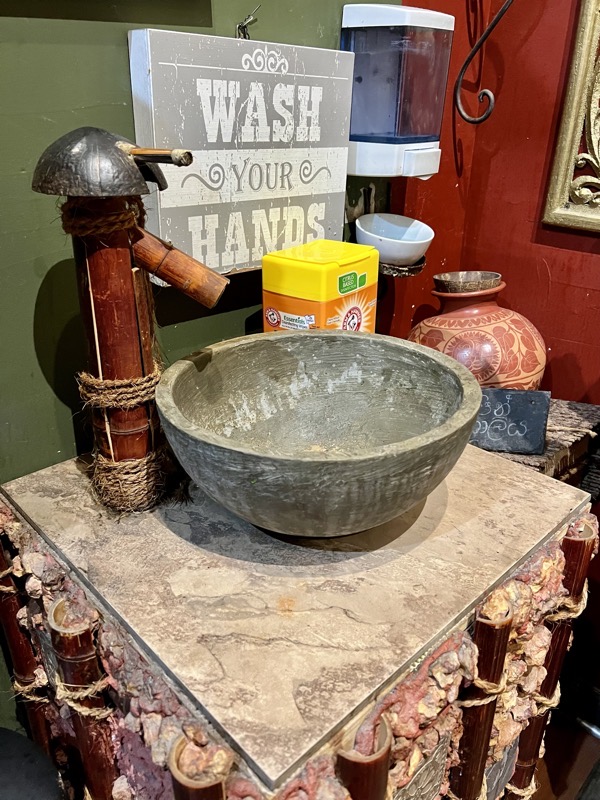
Some of the dishes served here can and probably should be eaten by hand. This washbasin is situated in corner of the dining area to accommodate that. It blends seamlessly into the rest of the room.
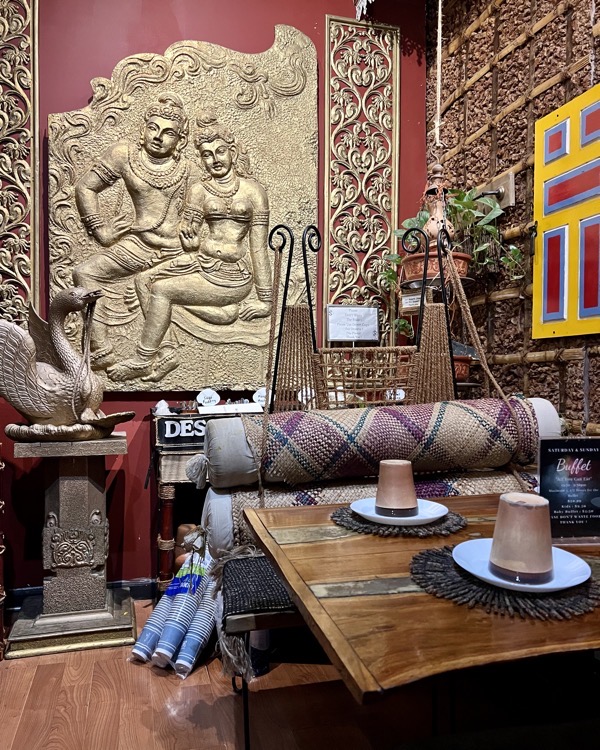
Every corner feels like a perfect place for a date and romance. Every detail is thought through — even the beautiful clay cups for water.
The food is another story.
Anticipating another trip to an Indian restaurant, I was surprised how different and new the food was. It was not Indian, not African, not Pakistani, Yemeni, or Nepalese, or Burmese, or Indonesian, Malaysian. Not Mediterranean, or Portuguese. Although all the above variations went through my mind as we were going through our dinner.
The island looks so little on the map of the world. Amazing how it stamped its own identity in the ocean of food flavors of the world.
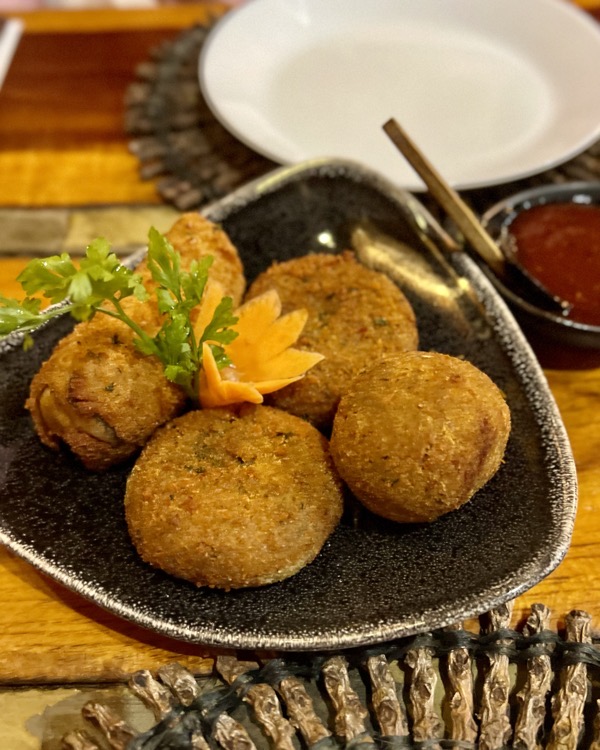
A combination starter was a plate of dhal and potato deep fried rolls stuffed with fish and vegetable. Crispy on the outside, light and silky inside they carried a good amount of flavor and spices.
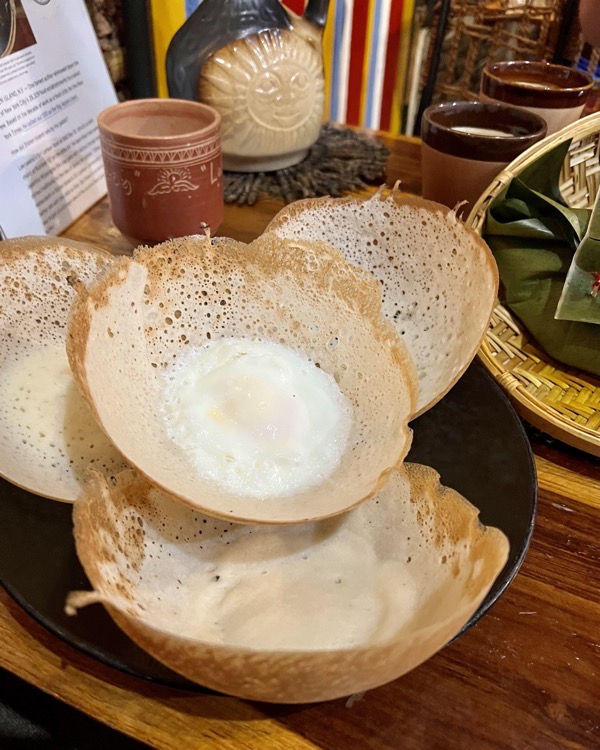
Lamb hoppers, or appam, reminiscent of Ethiopian injera but smaller and crispier were there to scoop up the lamb curry.
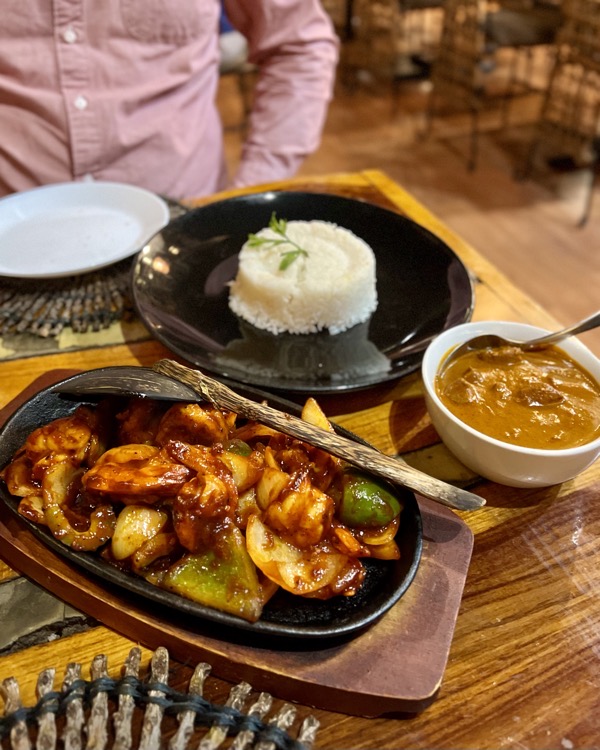
Spicy sizzler is a house-made special. Shrimp, red and green peppers are stir-fried in a hot and spicy tomato sambol. The heat is such that it doesn’t burn the tongue or the roof of the mouth but rather rises back from within, warming up the body.
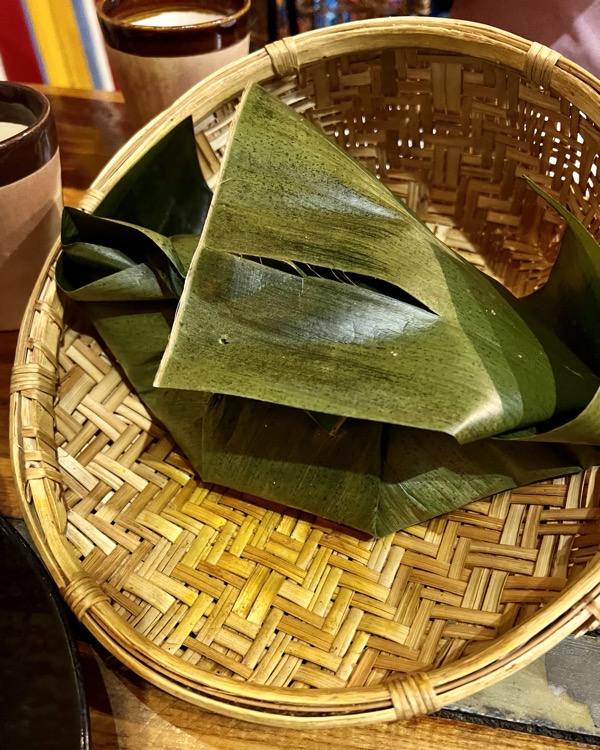
The presentation of Lampais is fantastic. It does remind of the Malaysian coconut rice — Nasi Lemak — but different.
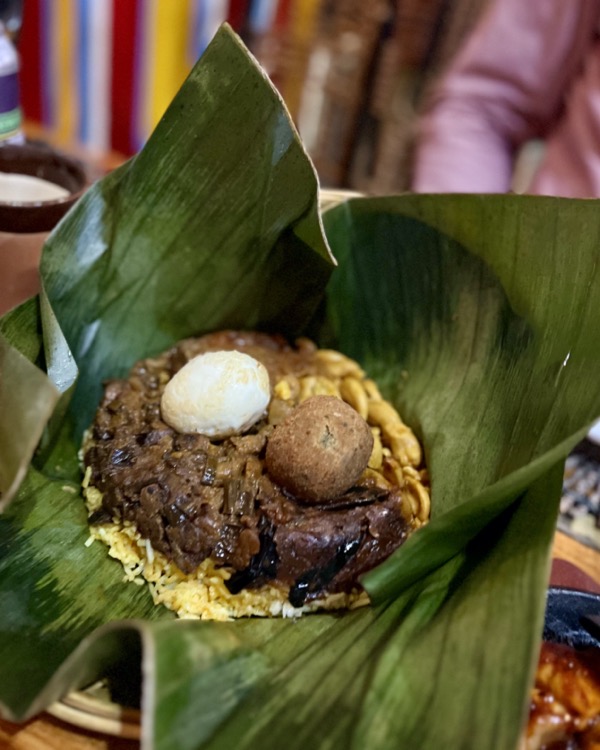
Our Lamprais consisted of lamb curry, eggplant, caramelized melting onions and cashews, house-made sambol, stock-cooked rice, a boiled egg, and a frikadeller baked and served in a banana leaf. There was a flavor of fermented shrimp sauce, chilies, turmeric, cumin, cardamom, and a myriad of other spices.
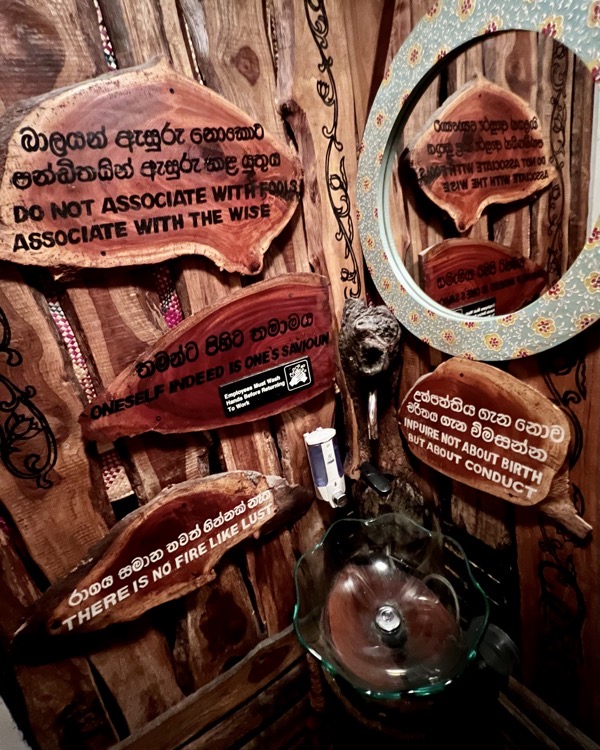
The decoration details are thought through to every corner in the bathroom. It did take me a minute to figure out how to turn the water on. Maybe because I was more interested in signs on the walls?
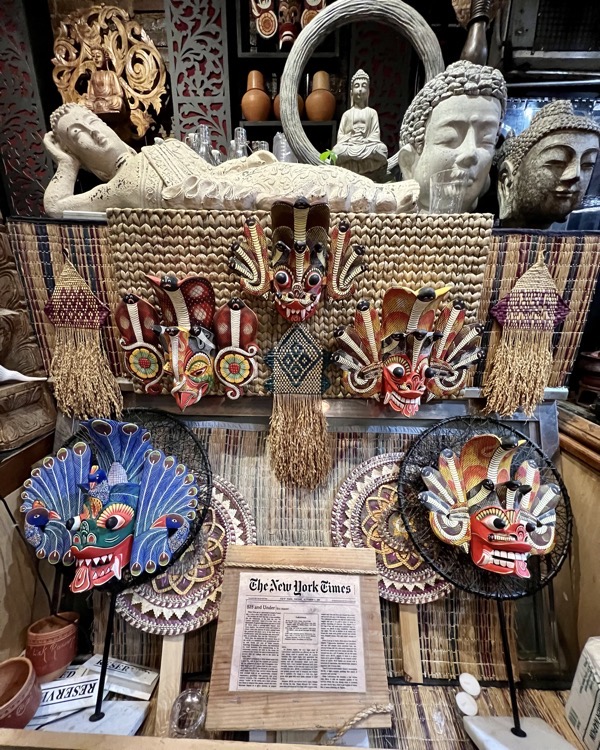
One of the regular customers told me that the owner of the restaurant went to a great length to bring real artifacts from Sri Lanka. That did not escape the watchful eye of New York Times.
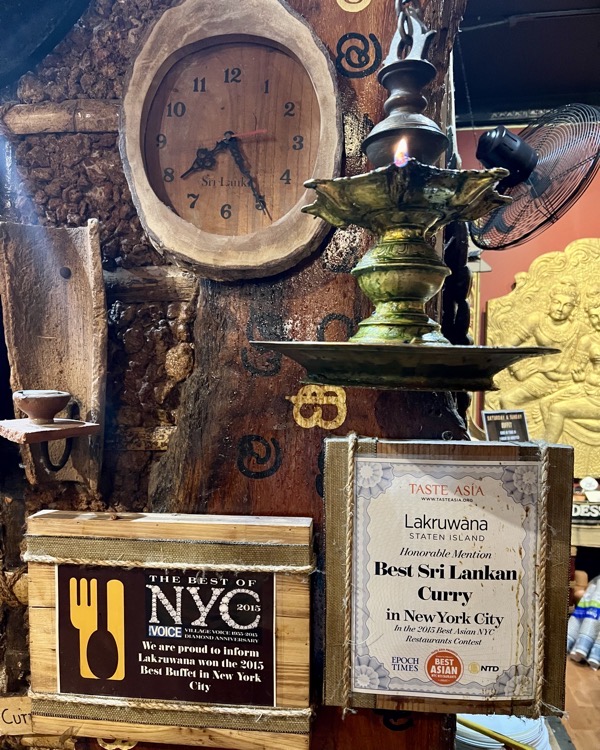
Larkruwana is named after its creator Lakruwana Wijesinghe, a man who fell in love with culinary creativity of his the future wife Jayantha. He now credits himself as a store cashier.

Two Sri Lankan immigrants brought their dream to reality in 1995 in Manhattan Theater District. A quick success was destroyed by a devastating fire in 2004. Instead of abandoning their efforts, they moved them to Staten island. To attract customers to new and unknown food, they started offering weekend buffets. That helped. Pandemic didn’t. They opened an outdoor area and regrouped the responsibilities.
This is where they are now.
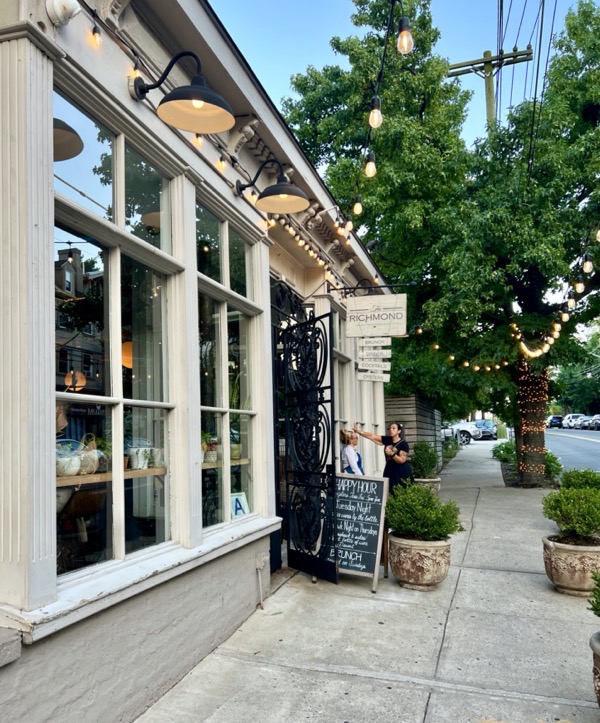
Even though two policeman we spoke to suggested we’d be better off on the other side of Staten Island, we marked a couple of more places to visit.

Vinum is being one of them. Local police who we asked for directions cued us to this Michelin star restaurant:
— What? You are not here for this place?
No. But thank you, adding it to our list.
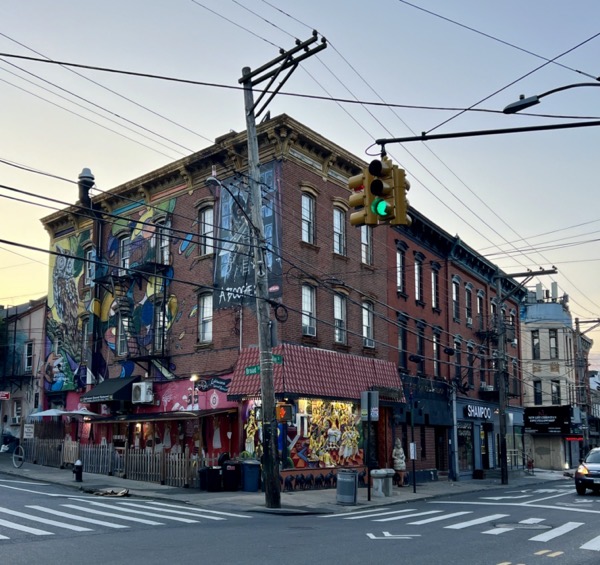
The sun was setting down, so we followed the advice of our law enforcement friends and took a bus back to the ferry terminal.
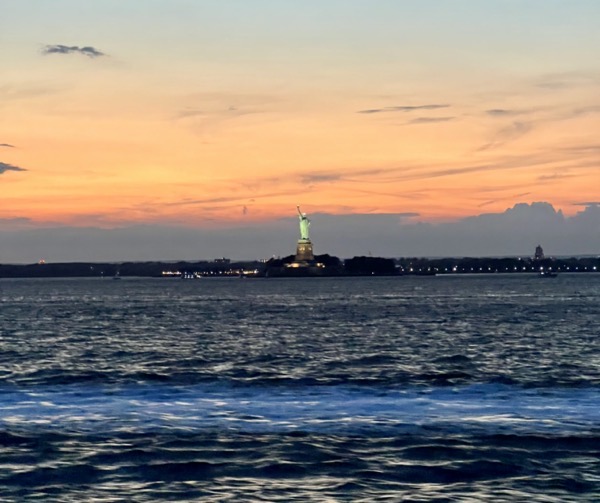
On the way back, we elbowed our way through the rest of the world onto the Statue of Liberty side of the ferry. Once we sat down, this effort became pointless — a solid triple wall of city guests blocked the view entirely — not even a glimpse of water. Not a single word of English language was heard in that crowd. And that was powerful.
To take this picture, I had to use my immigrant skills and elbows which remain sharp to this day.

